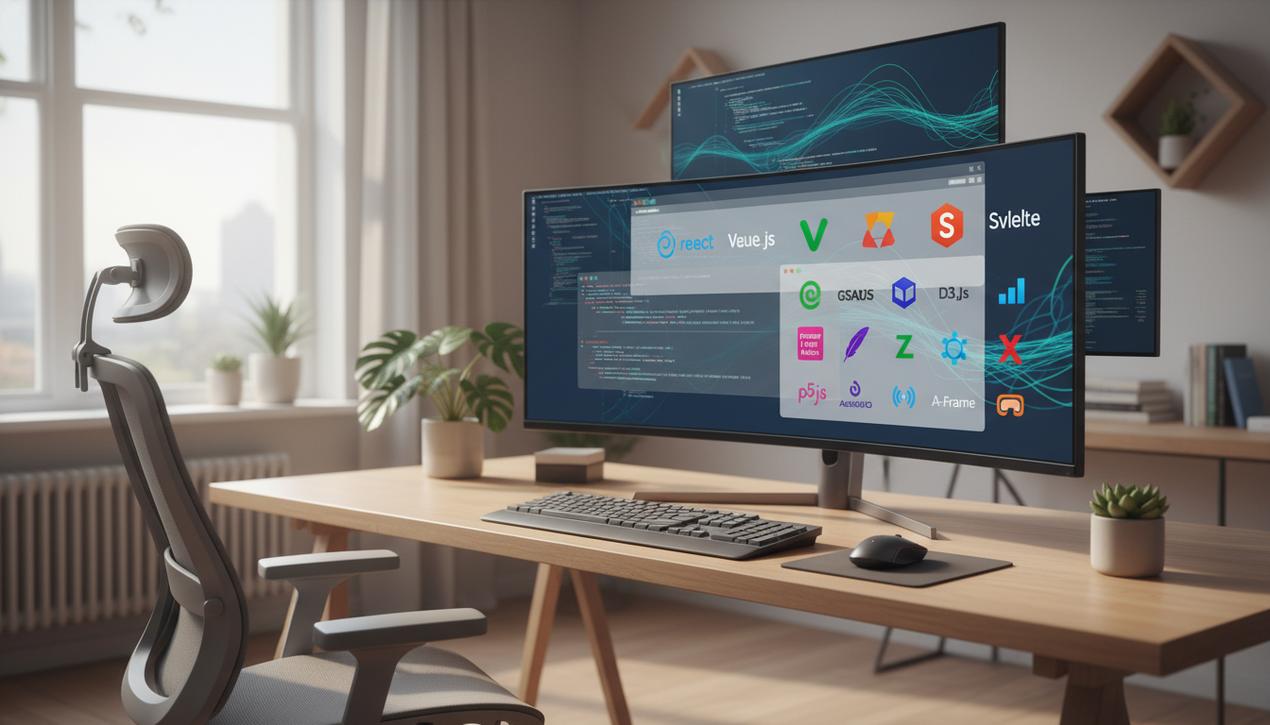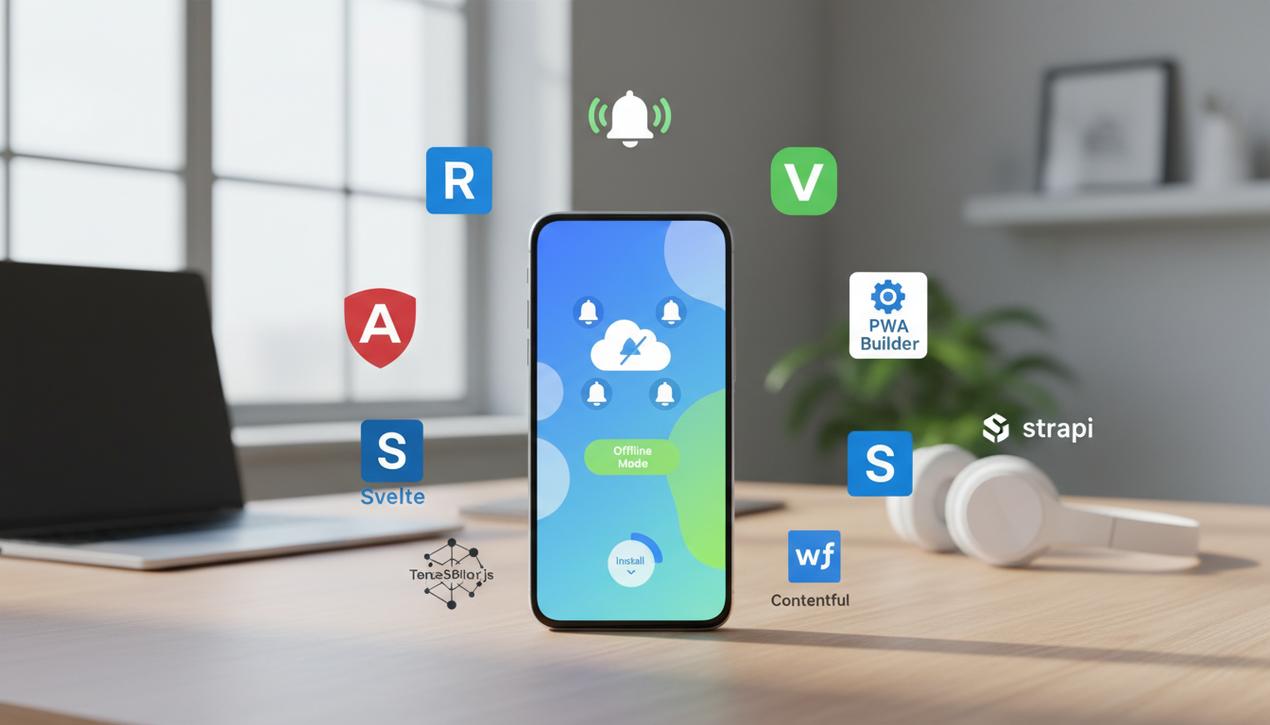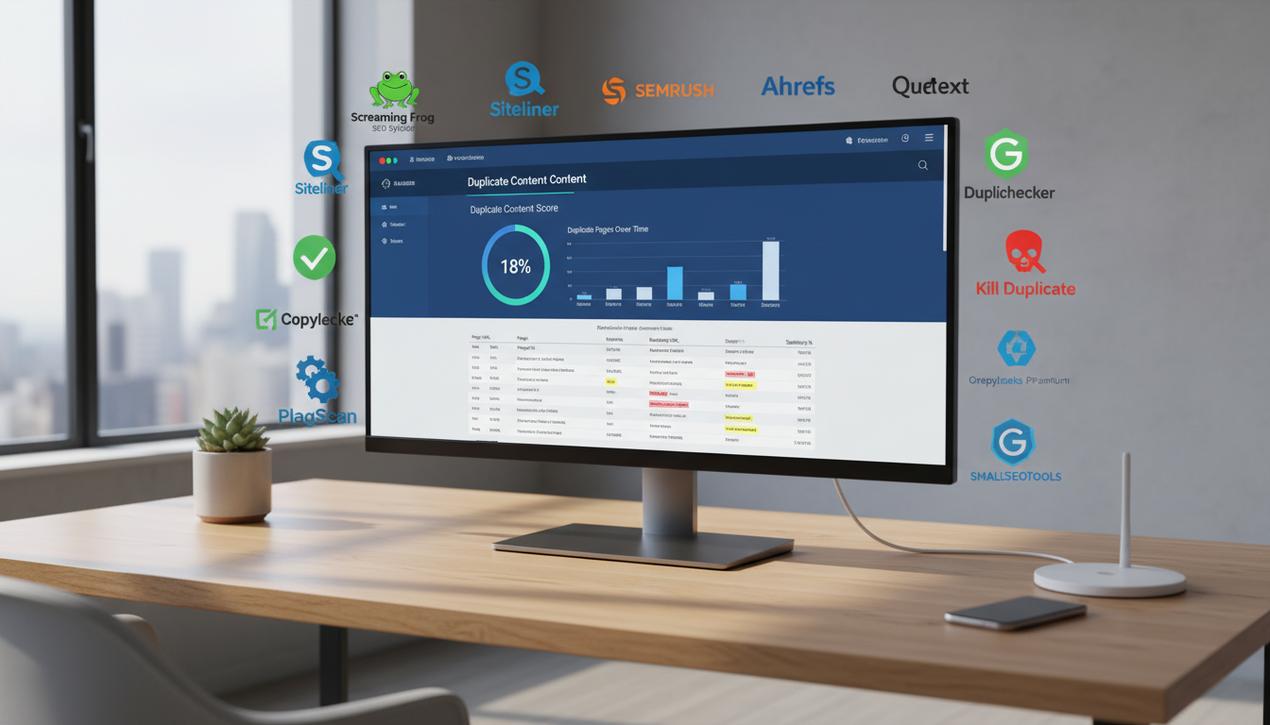Top 18 JavaScript Libraries to Know in 2025


JavaScript is the undisputed programming language of the modern web. In 2025, it powers the client-side of over 98% of all websites, making it an essential skill for anyone exploring how to learn computer programming. However, writing complex applications in plain (“vanilla”) JavaScript can be inefficient and repetitive. This is where JavaScript libraries come in: collections of pre-written code that streamline complex tasks, from building fluid user interfaces to managing real-time data. The JS ecosystem is a vast and rapidly evolving landscape with thousands of available tools. Choosing the right ones can be the difference between a high-performing, innovative application and a project that struggles to keep up. This guide presents the 18 most relevant, powerful, and popular JavaScript libraries for 2025, categorized by their use case to help you build exceptional web experiences.
Libraries for User Interface (UI) Development
These libraries are the foundational building blocks for creating modern, interactive, and dynamic user interfaces. They enable the development of Single Page Applications (SPAs), a core concept in modern PWA development, where content updates seamlessly without a full page reload, providing a smooth and responsive user experience.
1. React.js
Developed and maintained by Meta (Facebook), React remains the most popular UI library by a significant margin. It utilizes a component-based architecture, where each part of the UI is an independent and reusable piece of code. Its vast ecosystem, supercharged by frameworks like Next.js, extends its capabilities to server-side rendering (SSR) and static site generation (SSG), making it ideal for complex, large-scale web applications.
2. Vue.js
Vue.js is often praised for its gentle learning curve and excellent documentation, making it a more approachable alternative to React for many developers. As a progressive framework, it can be easily integrated into existing projects to enhance a small section or used to build a complete application from the ground up, often styled using the top Tailwind CSS themes.
3. Svelte
Svelte takes a revolutionary approach. Instead of shipping a library to run in the user’s browser to manage the UI, Svelte is a compiler. During the build process, it converts your Svelte components into highly optimized, vanilla JavaScript. This results in incredibly fast and lightweight applications, as they don’t carry the overhead of the framework itself. It’s a fantastic choice for projects where performance is the top priority.
4. SolidJS
For developers chasing peak performance, SolidJS is a compelling option. It uses fine-grained reactivity through signals, an approach that allows it to update the DOM with surgical precision without a virtual DOM. This leads to performance levels that are remarkably close to raw JavaScript. While its ecosystem is still growing, SolidJS is rapidly gaining traction for building ultra-fast UIs.
Libraries for Animation and Visualization
Bringing a webpage to life with engaging animations or presenting complex data in an intuitive format is crucial for user engagement. These libraries specialize in creating high-impact visual experiences.
5. GSAP (GreenSock Animation Platform)
Widely regarded as the industry standard for web animation, GSAP is an immensely powerful and high-performance library. It allows you to create complex, sequenced animations on HTML, SVG, and other elements with a level of control that CSS animations cannot match. GSAP is the go-to tool for interactive storytelling, complex UI animations, and any project requiring flawless visual execution.
6. Three.js
When you need to bring 3D graphics to the web, Three.js is the essential library. It simplifies the use of WebGL, the browser’s API for rendering 3D graphics, by providing the tools needed to create scenes, cameras, lights, and objects. It’s the engine behind everything from interactive product viewers on e-commerce sites to immersive WebGL experiences and games.
7. D3.js (Data-Driven Documents)
D3.js is the most powerful and flexible data visualization library available. It allows you to bind arbitrary data to the Document Object Model (DOM) and then apply data-driven transformations to create custom, interactive charts, maps, and infographics. While it has a steep learning curve, D3.js offers unparalleled freedom to create unique and compelling data visualizations.
8. Chart.js
For more common charting needs, Chart.js is a fantastic, user-friendly alternative to D3.js. It allows developers to quickly create eight basic chart types (bar, line, pie, etc.) that are responsive, customizable, and visually appealing. It is the perfect choice for building dashboards, analytics displays, and simple reports.
9. Framer Motion
Built specifically for the React ecosystem, Framer Motion is a production-ready animation library that makes creating complex animations remarkably simple. It provides a declarative API to animate components, handle gestures like dragging and tapping, and orchestrate fluid page transitions. It is an essential tool for any React developer looking to elevate their application’s user experience.
Utility and Data Management Libraries
These libraries are the unseen workhorses of modern web applications. They don’t render visuals but are critical for manipulating data, managing application state, and communicating with servers.
10. Lodash
Lodash is an indispensable utility belt for JavaScript developers. It provides hundreds of helper functions that simplify working with arrays, objects, strings, and other data types. By abstracting common operations, it helps you write cleaner, more consistent, and more readable code. It is consistently one of the most downloaded packages on npm.
11. TanStack Query (formerly React Query)
Fetching, caching, and synchronizing server state in web applications is notoriously difficult. TanStack Query masterfully simplifies this entire process. It automatically handles caching, background refetching, and managing loading and error states, making applications faster and more resilient. Though it originated in the React world, it has evolved to be framework-agnostic, with adapters for Vue, Svelte, and SolidJS.
12. Zod
Data validation is a critical aspect of application security and reliability. Zod is a TypeScript-first schema declaration and validation library that has exploded in popularity. It allows you to define the expected “shape” of your data and then parse incoming data (from an API, a form, etc.) to ensure it conforms to that schema, all with excellent static type inference.
13. Day.js
Working with dates and times in JavaScript can be cumbersome. Day.js is a minimalist (only 2KB) library with a modern API that is largely compatible with the older, heavier Moment.js. It makes parsing, validating, manipulating, and displaying dates and times incredibly straightforward, making it an essential utility for countless applications.
Specialized and Innovative Libraries
This final category includes powerful tools designed for specific, crucial tasks, from real-time communication to automated testing.
14. Axios
While modern browsers have the native `fetch` API for making HTTP requests, Axios remains a hugely popular choice. It is a promise-based HTTP client that works in both the browser and Node.js. It simplifies sending requests, transforming data, and handling errors, and provides useful features like request cancellation and automatic JSON data transformation.
15. Vitest
Testing your code is a non-negotiable practice for building quality software. Vitest is a next-generation testing framework powered by the modern build tool Vite. It offers blazing-fast performance, simple configuration, and a Jest-compatible API, which makes migrating existing test suites easy. It is quickly becoming the new standard for testing in modern web projects.
16. Socket.IO
For applications that require real-time, bidirectional communication—such as chat apps, live notifications, or online multiplayer games—Socket.IO is the go-to library. It enables a persistent, low-latency connection between the client and the server, allowing for the instantaneous exchange of data.
17. p5.js
p5.js is a library focused on “creative coding,” making programming accessible to artists, designers, and educators. It provides a simple set of functions for drawing shapes, managing colors, and handling user input, making it an excellent platform for creating digital art, interactive visualizations, and educational projects.
18. A-Frame
A-Frame is a web framework for building virtual reality (VR) experiences. Built on top of Three.js, it allows you to create 3D and WebXR scenes using a simple, declarative HTML-like syntax. It is the easiest and most accessible way to get started with VR development for the web.
The JavaScript library ecosystem is a rich and dynamic field, offering a specialized tool for nearly every development challenge. Whether you are building a sophisticated user interface, a stunning animation, or a real-time data application, a library exists to make your job easier. The key to success is not to master them all, but to understand their respective strengths and choose the right tool for each task. By staying curious and experimenting with these powerful libraries, you will be well-equipped to build the innovative, high-performance web applications of tomorrow.




